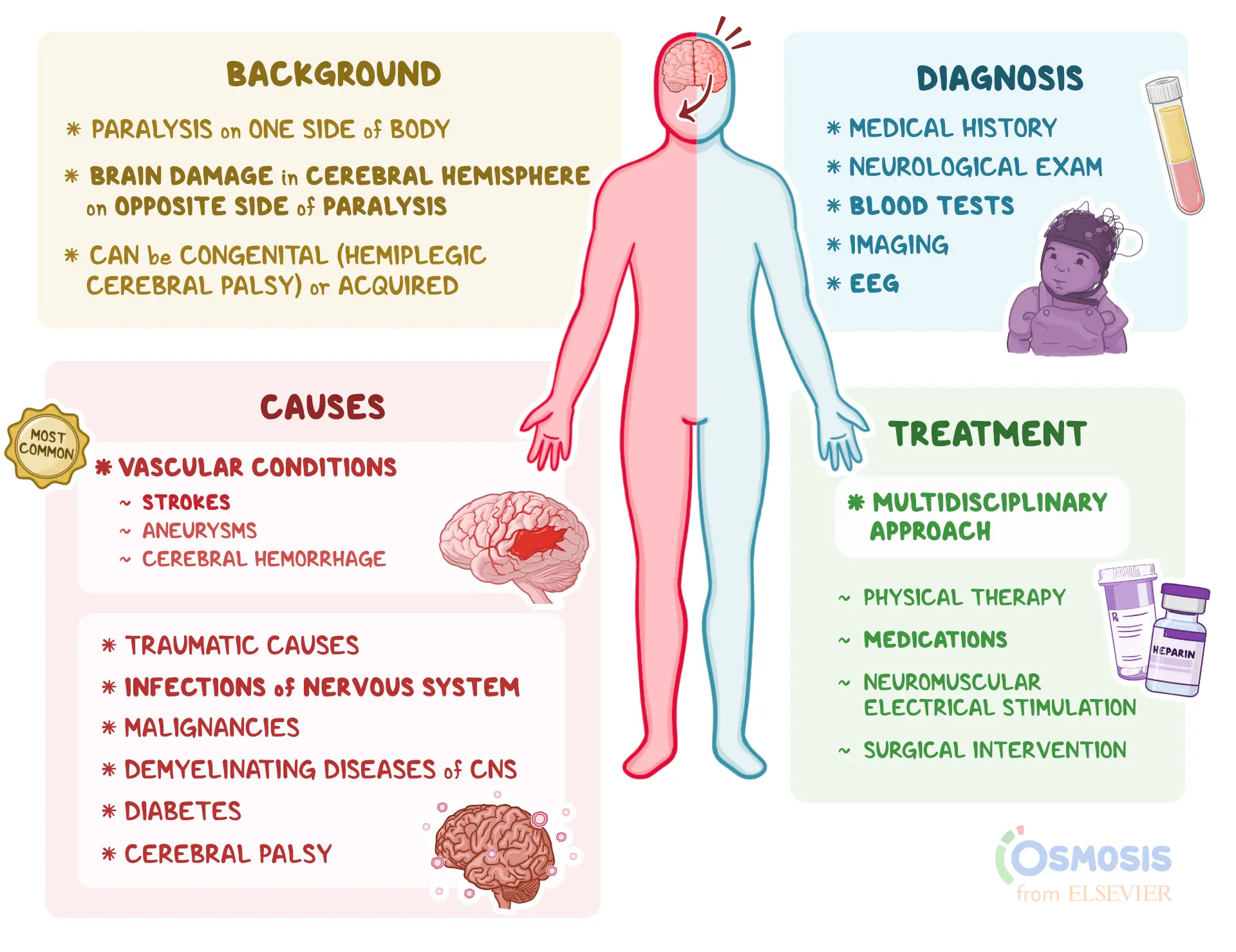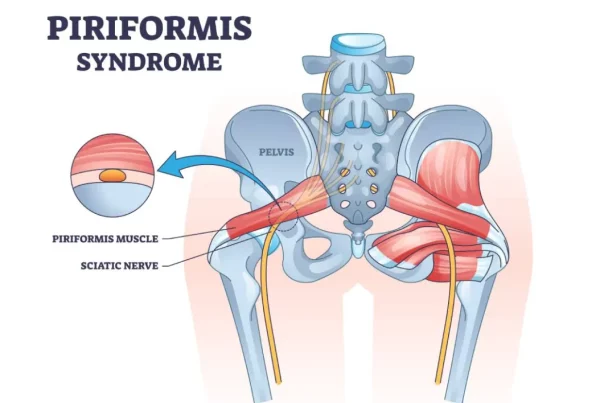What is it ?
Hemiplegia is a symptom that involves one-sided paralysis. Hemiplegia affects either the right or left side of your body. It happens because of brain or spinal cord injuries and conditions. Depending on the cause, hemiplegia can be temporary or permanent. Some causes of hemiplegia are treatable or even reversible with immediate medical care.
Hemiplegia is paralysis that affects only one side of your body. This symptom is often a key indicator of severe or life-threatening conditions like a stroke, but can also happen with conditions and circumstances that aren’t as dangerous.
Hemiplegia is paralysis, which means you can’t move or control the muscles in the affected body part. That can cause muscles that are completely limp. It can also cause spastic hemiplegia, a type of paralysis where muscles contract uncontrollably. Hemiplegia affects either the right side of your body (right hemiplegia) or the left side of your body (left hemiplegia), with your spine (backbone) being the dividing line between the two halves.
Hemiplegia may affect your face, arm and leg on one side of your body in various ways: The paralysis may not be present, or not be as severe in all of these three body areas. There are even some rare conditions that cause hemiplegia to come and go, affecting one or both sides of the body as it does.
Depending on how and why it happens, hemiplegia may be treatable. In some cases, no treatment is necessary, while others need immediate medical care to reverse the cause of the hemiplegia.
Conditions that cause hemiplegia
There are dozens of conditions and circumstances that can cause hemiplegia. Some of the most common causes include:
- Strokes or transient ischemic attacks (TIAs).
- Aneurysms and hemorrhages inside of your brain.
- Concussions and traumatic brain injuries (TBIs).
- Spinal cord injuries.
- Injuries you experience during birth or very early childhood, causing conditions like hemiplegic cerebral palsy.
- Congenital conditions (which you have when you’re born) such as alternating hemiplegia of childhood.
- Facial paralysis conditions like Bell’s palsy.
- Seizures and epilepsy.
- Bleeding in between your brain and its outer layers (subdural hematomas or subarachnoid hemorrhages) or between your skull and your brain’s outer membrane (epidural hematomas).
- Brain tumors (including cancers).
- Nervous system diseases, especially autoimmune and inflammatory conditions, such as multiple sclerosis or progressive multifocal leukoencephalopathy (PML).
- Infections that affect your nervous system, like encephalitis, meningitis or Ramsay Hunt syndrome.
- Migraine headaches (when these involve hemiplegia, they’re known as hemiplegic migraines).
Are rehabilitation and exercise useful to treat hemiplegia?
When hemiplegia isn’t temporary, healthcare providers often recommend rehabilitation in addition to other treatments. Rehabilitation can take place in a hospital (inpatient rehabilitation), clinic or office (outpatient rehabilitation), or at home. Rehabilitation generally includes:
- Physical therapy: Focused on leg function, standing, walking and balance.
- Occupational therapy: Focused on arm/hand function and other activities of daily life.
- Prescription of equipment, to enhance safety and the ability to function inside and outside of your home.
- Managing symptoms associated with hemiplegia, such as spasticity and depression.
How can remedial massage help?






